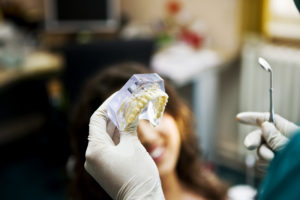 Considering the diligence required to maintain a healthy mouth, it appears that the mouth is one of the dirtiest parts of the body. It is also said to be laden with bacteria, yet wounds that occur in the mouth tend to heal the fastest, plus they don’t seem to get infected. How can this be?
Considering the diligence required to maintain a healthy mouth, it appears that the mouth is one of the dirtiest parts of the body. It is also said to be laden with bacteria, yet wounds that occur in the mouth tend to heal the fastest, plus they don’t seem to get infected. How can this be?
Indeed, how the mouth can be so full of bacteria without inhibiting other parts of the body is a mystery that a professor of dental research at Case Western Reserve University, Dr. Aaron Weinberg, sought to unravel for many years. During his research, Dr. Weinberg notices that there are certain bacteria in the mouth that stimulate the production of hBDs – human beta defensins – in cells lining the mouth.
Dr. Weinberg isolated an agent from bacteria that activated the release of beneficial hBDs. These hBDs act as natural antibiotics, protecting the mouth from disease-causing bacteria, viruses, and fungi and maintaining healthy tissues.
Relationship Between hBDs, Saliva, and the Oral Environment
The mouth is a unique environment, with the oral mucosa serving as the interface between internal and external environments, as well as a shield to prevent a range of microbial organisms that thrive in the warm and moist environment from escaping.
The mouth is the only place where hard tissues (teeth) erupt through the epithelial surface in the gums. Teeth are surrounded with periodontal epithelium, a substance that is specialized to form a seal and attachment around each tooth. When this tissue is compromised, especially due to poor hygiene resulting in the buildup of plaque on the tooth surface, it leads to gum disease.
To maintain a healthy mouth and prevent disease in this complex environment, the mouth relies on antimicrobial peptides, which include several salivary antimicrobial peptides, the defensins (hBDs) expressed in neutrophils and the epithelium, and the cathelicidin, expressed in both epithelium and neutrophils.
It is these peptides that work together to provide the innate immune response in the mouth, though saliva, epithelia, and the leukocytes also contribute to maintaining the health of the mouth.
Further Research on the hBDs
After realizing the important role of hBDs in the mouth, Dr. Weinberg set out to develop ways to use the agent to fight disease by stimulating the natural defenses of the mucous membranes in the mouth and other parts of the body.
For instance, administering the agent via an injection might protect against the spread of STDs; or putting it in toothpastes could prevent gum disease; or coating a bandage with it could facilitate speedy healing.
If his research is successful, it will be a major breakthrough with these natural antibiotics paving the way for natural disease fighting.
The Natural Antibiotics in Our Mouth
This entry was posted in Educational and tagged benefits of saliva, mouth natural antibiotics, study performed on hBD. Bookmark the permalink.